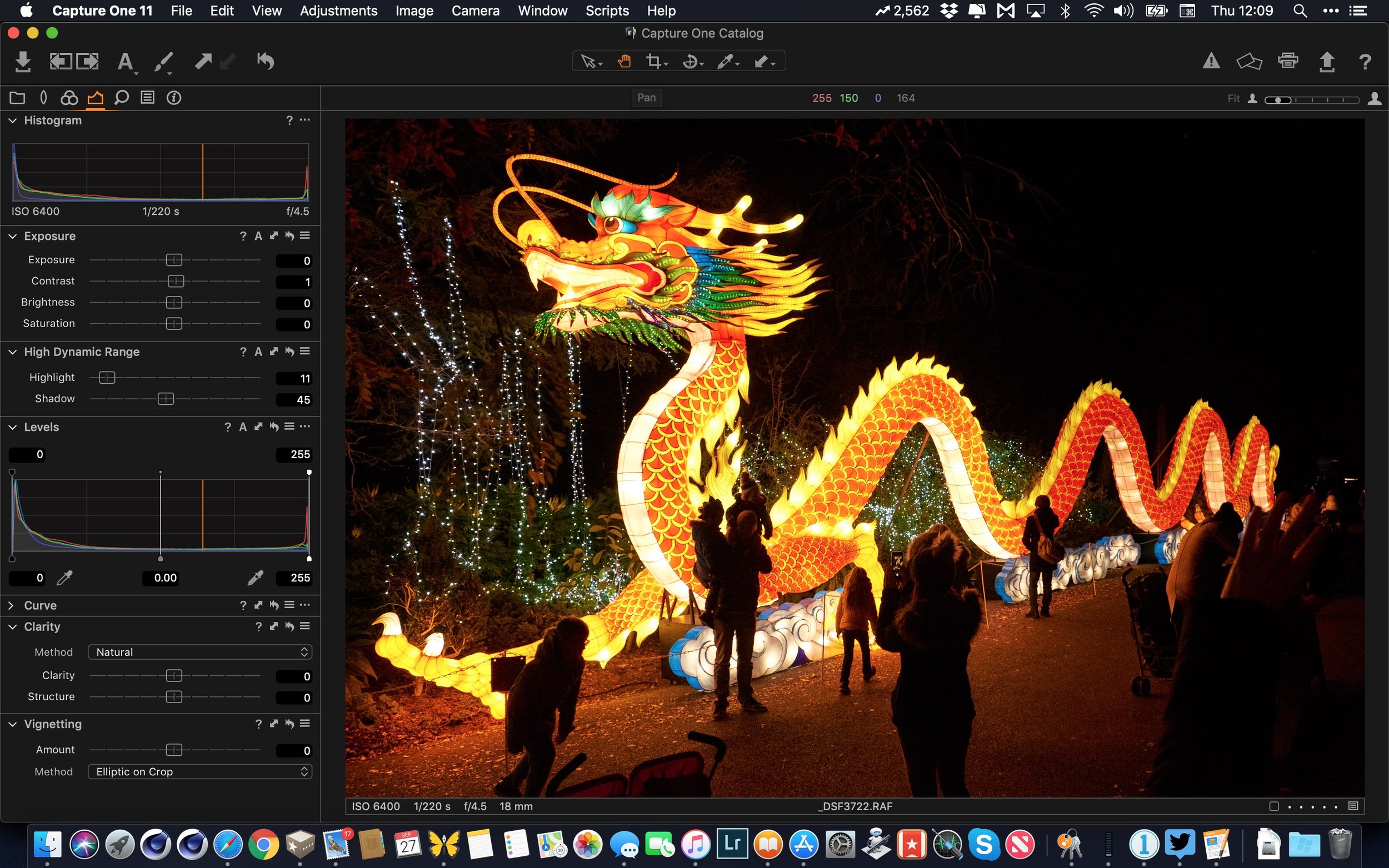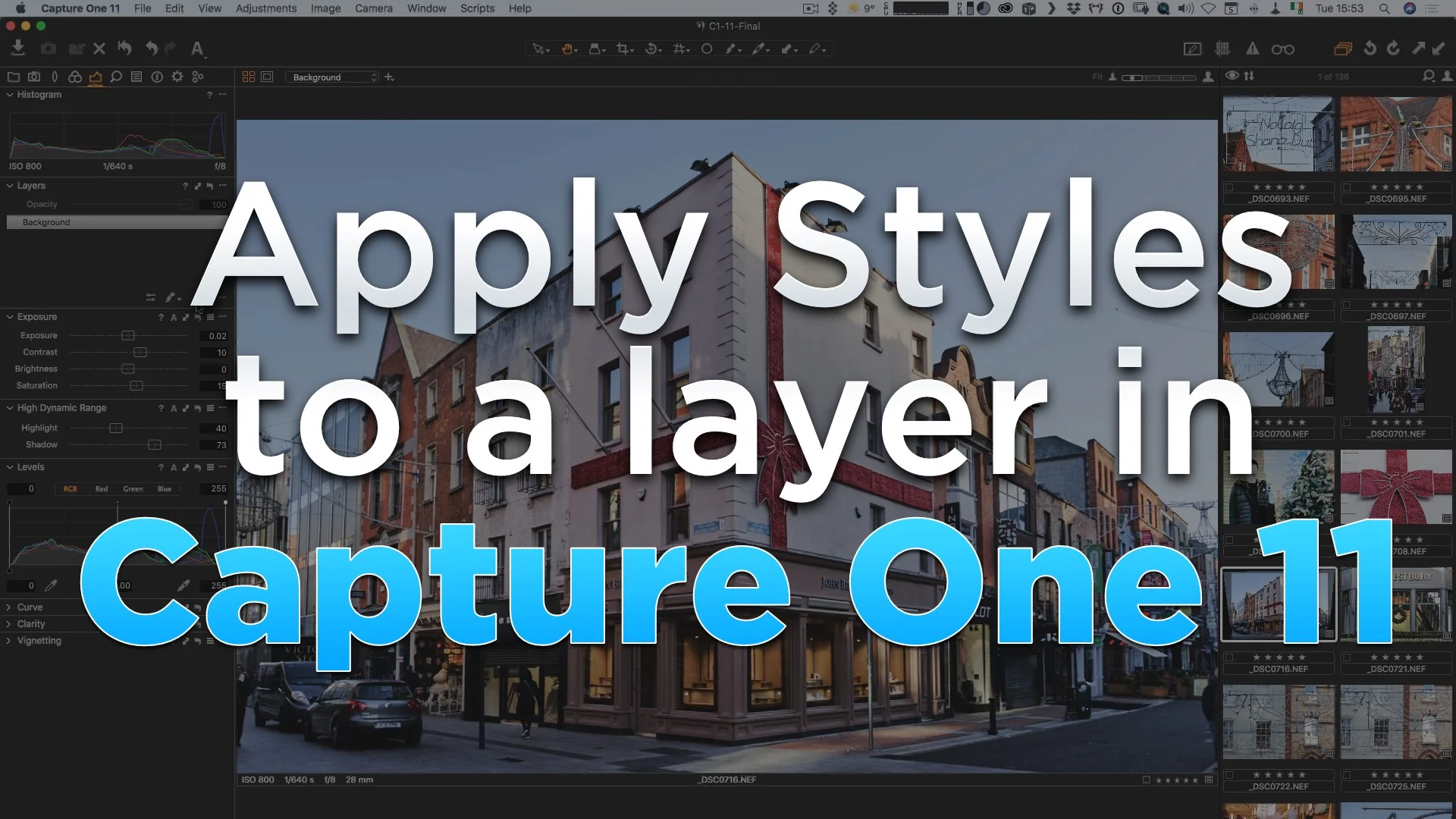A little while ago I posted a video overview of the new “express” version of Capture One. That video generated a lot of interest, and I also got a lot of questions about the software. With that in mind I created a follow up video where I answered the most common questions.
All in Capture One
Video - Capture One Express For Fujifilm: Getting Started and How to Use it
With the launch of the new free version of Capture One for Fuji shooters, I figured a lot of people would be trying the software for the first time. The software can be a little confusing at first however, especially if you’re coming from Lightroom, and some of the features may be a little hidden or not work the way you think. With that in mind I created a video to give you an overview of how to use the software.
Styles in Action: Creating Impact in Black and White with SilverLux and Capture One
One of the many things I like about Capture One, is the way you can create some really nice monochrome images with it. I’m not sure what it is about the software, but whatever is going on behind the scenes gives black and white images a really rich black look to them. It was this that caused me to create my first set of Capture One styles: Silver Lux.
Capture One Express Fujifilm: A Quick Overview
This week Phase One released a new cut down version of Capture One which is free for Fuji shooters. While it doesn’t have all of the features of the full release, it can do quite a lot, considering that it is free. If you’re a Fuji shooter, and you were looking for a Lightroom alternative, then it’s worth giving it a try. In order to evaluate this, I downgraded my full version on one of my computer to check out what was included in the express option.
Fujifilm announces collaboration with Phase One; Improved Fujifilm Support Coming to Capture One
Of the news coming out of Photokina today, this probably flew under the radar amid all the camera announcements, but I think it is one of the most significant for Fuji shooters. Phase One has basically done a deal with Fuji to better support Fuji cameras including its medium format cameras. It will also release a Fuji specific version of Capture One (similar to what the company currently does for Sony).
Sharpening and Noise Reduction Presets for Processing Sony Files in Capture One
I recently posted a video to my YouTube channel about processing some Sony A6000 images in Capture One. In the video I mentioned some sharpening and noise reduction presets that I use. These should work with any Sony RAW file, so even those from the Sony A7 series or the A9. You can find links to download in this post, as well as the video itself.
10 Capture One Quick Tips
Capture One is a complex application and I’m always discovering new things with it. It’s one of those things where there are often features or techniques hidden in plain sight. I’ve collected a series of tips below, which you may find useful. Some of these are from the point of view of someone moving from Lightroom, but they should be applicable to any Capture One user. You may, of course, know some or all of these already, but anyway, I hope this is useful.
Introducing Alpine for Capture One
A few weeks ago when I launched Alpine for Lightroom, a few people wrote to me asking for a Capture One version. After some work and experimentation, I’m happy to announce that I now have a version of Alpine for Capture One. So what is Alpine? In a nutshell, Alpine for Capture One is a set of “Styles” that is designed to give your RAW images a stylised look. The idea for Alpine was to work with images of forests and mountains, to give the “woodsman” style of effect that is popular certain outdoor magazines.
Video: How to Create Your Own Custom Colour Profiles in Capture One
If you use Capture One, but find yourself tweaking the colours of your images a lot, then there’s actually a really useful feature in the software. You can create your own custom colour profile. This is sort of like being able to adjust the calibration like you can in Lightroom only it works in a different way.
Some Free Styles for Capture One
I’ve been building up a collection of Styles in Capture One for some time, and I originally had the intention of releasing hem as a styles pack, but I was never really happy with them as a complete pack. However, I’ve developed quite a few over the years, and they’re just sitting here on my computer, so I thought I’d share them anyway.
Using X-Transformer Files with Capture One
In the past, I haven’t really covered the notion of using X-Transformer converted Fuji raw files with Capture One, because I didn’t really see the need. Capture One does a pretty good job on its own of converting Fuji RAW files, so I didn’t really see the point of going through the process of using X-transformer to convert the images first. However, I recently came across a situation where you may want to use X-Transformed DNG files, which I hadn’t thought of before, but now it seems obvious.
Applying Styles to a Layer in Capture One 11
One of the key new features of Capture One 11 is the new layers system. As I mentioned in my first look at the software, it’s a really useful features, especially when it comes to applying creative looks to your image. You can do your creative editing on a new layer, and then use the opacity slider to fade the results, controlling the overall look. I really wanted to be able to apply a style to a new layer, but at first it wasn’t obvious how to do so. I figured it out though, and so here’s what to do.
Capture One 11
Yesterday Phase One released the newest version of Capture One, Capture One 11. This new update features several major new features as well as some changes under the hood. The biggest difference in the upgrade is the new layers system, but there are also a lot of little features too.
Video: Capture One Quick Tip - Purple Fringing Control
In this short quick tip for Capture One, I look at how to use the purple fringing control to get rid of chromatic aberration that’s not addressed by the normal aberration correction tool.
Updated Plan for my Next Capture One Guide
One of the first Fuji X-Trans guides that I had put out, is my “Workflow and Settings for Processing Fuji X-Trans Raw Files in Capture One”. This, while something of a mouthful, got the ball rolling. I have done my best to keep updating it with new versions as the software got updated, but at some point, it started to get messy.
Capture One’s Preview Problem and How to get Around it
I really like Capture One, but I do have one major issue with it which, has been driving me mad. It doesn’t render previews that fully represent what the final output will be like. What do I mean by this? If you are viewing an image set to fit the screen, certain things like sharpening are only approximated, and certain things like aberration correction and fringing aren’t rendered at all. In order to see these properly, you need to view the image at 1:1. There is a way around this, however, but more on that in a minute.
Capture One Tips for Creating a better Default Image
If you’ve been following my blog for some time, you’ll know that I’m a regular Capture One user. I don’t generally use it as my main image processing software, but I probably use it for maybe 30- 40% of the work that I do. While I’ve talked about it a lot on this blog before, much of that has been in the context of using Capture One for Fuji X-Trans images, but I actually use it with many other cameras too. With that in mind, today I wanted to give you some tips that aren’t camera specific, and cover ways to improve the default way Capture One interprets RAW images.
X-Trans Capture One Guide Updated with Supplement for 10.1
When Capture One was recently updated to 10.1 they made some significant changes to the way X-Trans files are supported. I have been in a bit of a quandary as to what to do about my Capture One X-Trans guide. I originally wrote this quite some time ago now, and it was several versions ago. I have kept updating it, but it was getting a bit messy. I am planning to do a completely new version, for just 10.1, and structuring the guide differently. However, I didn’t want to leave existing readers hanging either. With that in mind I’ve created a supplement for 10.1 and it is included free with the existing guide.


















